Flying for good
100% electric aircraft, fuel made from algae and drone taxis. A look at the future of flight.
07 April 2020
Originally published
01 April 2018
Source
There’s a 100 km/h wind that blows in the Slovenian town of Ajdovščina, which lies at the foot of the Julian Alps. Locals call this wind burja. It’s active for around one-third of the year in this town of 6,700, and it’s not unusual for it to reach speeds of over 130 km/h. Residents of Ajdovščina are proud of the ruins of an old Roman camp here and of the idyllic hiking trails in the region. But they’re even more proud of a local high-tech firm that’s headquartered here. It sells futuristic ultralight aircraft to Arab sheikhs, and it’s developing a flying delivery service for Uber Eats.
Ivo Boscarol is the founder of that company, which is called Pipistrel. He grew up in Ajdovščina and set up his aircraft production facility here. Under his leadership, the company has developed into an air-and-space industry pioneer in this sleepy town.
The government of Norway is one of the company’s most important clients. That Scandinavian country wants electric engines to handle all of its internal air travel by 2040. Engineers at Pipistrel are working on a 19-passenger aircraft to make that dream a reality. They hope their design will help make the world a better place. “We’re doing our part to save the atmosphere,” says Ivo Boscarol. His fascination with flying began as a child, when he spent all of his free time at a small airport near his home.
It all began with some illegal tinkering in the former Yugoslavia. Boscarol smuggled his first airplane across the border one piece at a time in 1989.
Today Boscarol is 64 years old, and he’s sitting on a white leather sofa in a conference room at Pipistrel. There’s a small model airplane in front of him, and behind him is a large window through which I can see the sheer rock walls of the mountains. Pipistrel now comprises four subsidiaries: two in Slovenia, one in Italy and one in China. Around 150 employees in Ajdovščina are tasked with developing and producing new small aircraft. Each plane weighs between 285 and 815 kg, depending on the model, and seats two or four people. Around one plane rolls off the production line each day. Roughly 20 to 25 percent of those are electric – and that number is increasing along with demand.
“We thought it was crazy”
It all began with some illegal tinkering in the former Yugoslavia. Boscarol smuggled his first airplane across the border one piece at a time in 1989. It was against the law to own a private aircraft, so he told the border guards that the side panels were part of a tent, the hoses were for a radio antenna, and the engine was for a boat. It wasn’t long before friends got involved, and together they learned how to construct airplanes, maintain them and make them more efficient. Fuel was expensive and hard to come by. Pipistrel’s current business model for light, quiet, energy-efficient aircraft developed out of their efforts to keep what they were doing secret from the Yugoslavian authorities. In order not to attract too much attention, they could only fly at night. Residents of their town gave their planes the nickname “bats” because of the lights they put on the nose of the aircraft and the aircraft’s square wings. The Latin word for bat is pipistrellus, and that became Pipistrel.
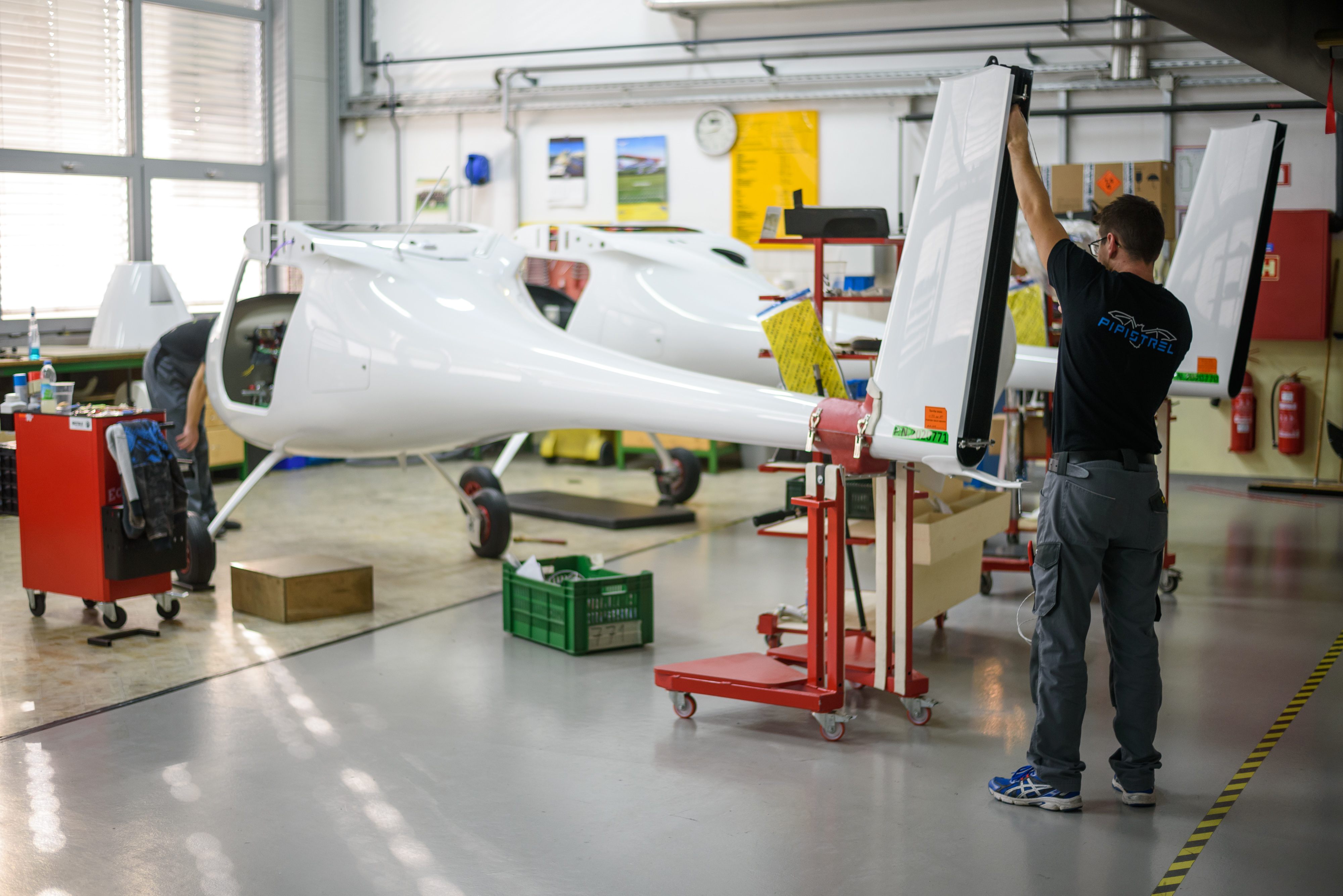
The Pipistrel factory employees working on the parts of an aircraft, Ajdovščina. Photo: © Jure Makovec / AFP / picturedesk.com
Ivo Boscarol’s daughter Taja, who is in charge of the company’s communication, sits next to him on the white leather sofa. She is dressed in black and has a spike-shaped piercing in her lower lip. Her favourite type of music is metal, she explains later when we are driving out to one of the production areas. She doesn’t turn on the radio, she says, because they only play mainstream music. When she talks about flying, you hear the excitement in her voice. “When Ivo announced that we were developing an electric aircraft for a NASA competition back in 2011, we all thought it was crazy,” she says. But then they won first place – with a fully electric four-seater that could cover the same distance in two and half hours as an aircraft with a conventional internal combustion engine.
That was eight years ago. Yet air traffic is still dominated by the same conventional internal combustion engines that are ruining our climate. Why has the industry been so slow to evolve? Who or what is standing in the way?
The revolution will be too late
The climate issue is causing more and more people to feel guilty about flying. In Sweden they even have a word for it: flygskam or “flight shame”. People are becoming more aware of the damage that flying does. But the number of passengers is still growing. According to the International Civil Aviation Organisation (ICAO), 4.3 billion passengers boarded planes in 2018 – an increase of more than six percent from the year before. The number of departures increased too, from 36.7 million to 38 million. The boom can be observed at Vienna International Airport as well. 27 million passengers started their journey there in 2018 – almost 11 percent more than in 2017.
The Intergovernmental Panel on Climate Change (IPCC) says that flying generates around three percent of global CO2 emissions, but it has a much bigger impact than that because the harmful exhaust – which contains carbon dioxide, nitrogen oxide and sulphur dioxide – enters the atmosphere faster due to the high altitude. These emissions are rising rapidly too. They are believed to be around 70 percent higher in 2020 than they were in 2005.
The world is in desperate need of a solution. Fast. Even faster than companies like Pipistrel turn out innovations, actually. The switch that Norway is planning for 2040 is a step in the right direction. And a revolutionary one at that, says Nikhil Sachdeva, a consultant for the aviation industry at Roland Berger. But a revolution in aviation 20 years from now is going to be too late for the climate.
Liquid dinosaurs
Aircraft are being improved incrementally, and minor improvements are being made to their fuel efficiency. It clearly makes good economic sense to use less fuel. But many airplanes flying today were developed some 20 years ago, and they have significantly higher emissions than is necessary. In Europe, 17 percent of aircraft are over 20 years old right now. As a speaker from the European Commission has said, Europe needs a step change right away. That’s a fundamental transformation, not fine-tuning.
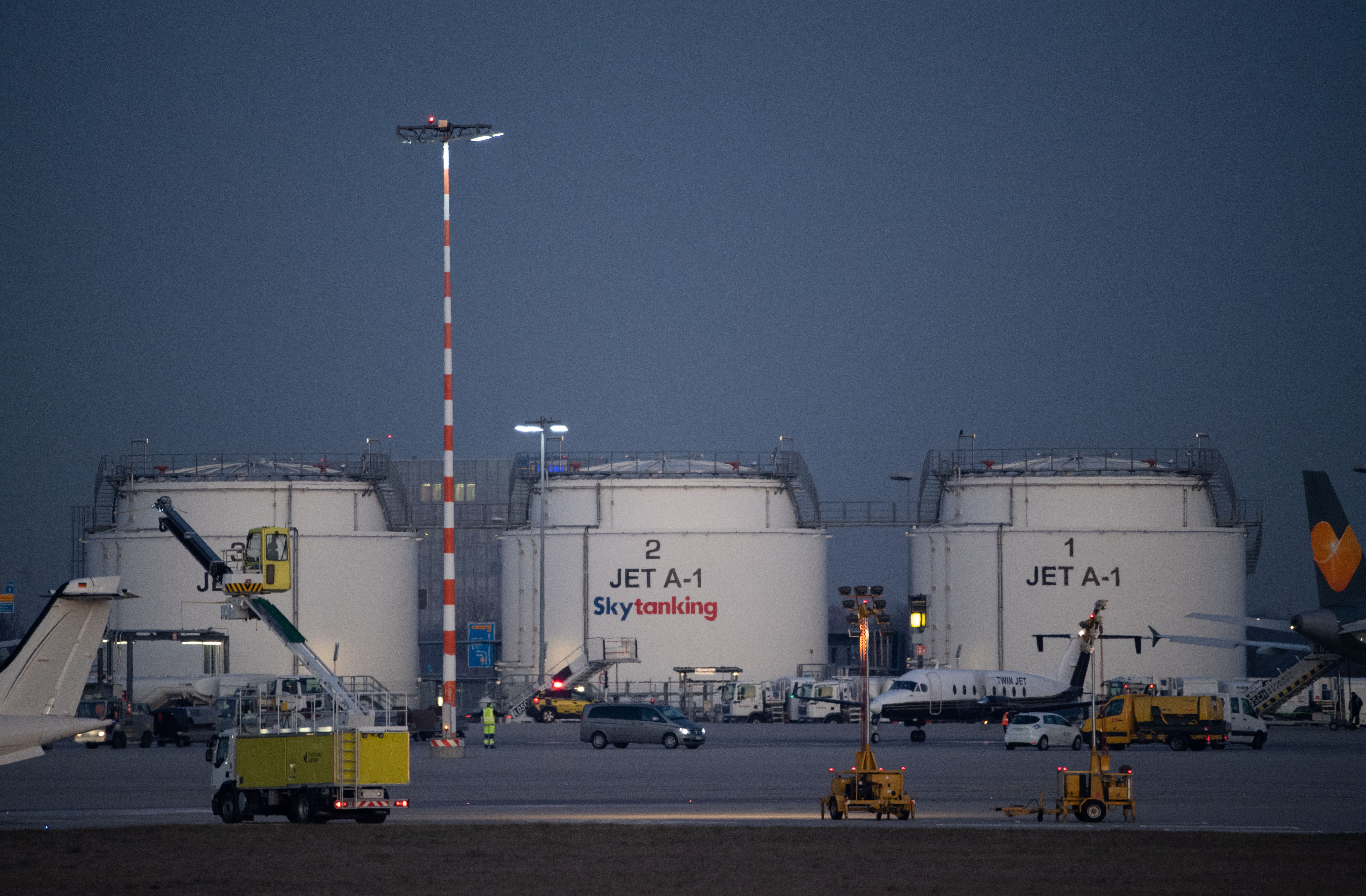
Fuel tanks at Stuttgart Airport. Photo: © Marijan Murat / dpa / picturedesk.com
But there’s far too little interest in a transition of that kind. Fuel is too cheap right now, and the “liquid dinosaur” business – as Tine Tomažič, head of Pipistrel Vertical Solutions, calls today’s aircraft – is working too well. In fact, technological innovation and greater efficiency have even enabled airlines to offer tickets at lower prices. And that has led to an explosion in ticket sales.
In Sweden they even have a word for it: flygskamor “flight shame”. People are becoming more aware of the damage that flying does.
Inka Pieter, Sustainability Manager for KLM Royal Dutch Airlines, points out that aircraft manufacturers Airbus and Boeing are not interested in change. “They are the only manufacturers that we can buy from. They have a duopoly, and that does not create nearly enough pressure for them to bring more environmentally friendly aircraft to the market quickly,” says Pieters. She has been working with KLM to develop synthetic biofuels that can be easily mixed with regular jet fuel. 30 percent of the fuel used for a KLM flight from Los Angeles to Amsterdam is synthetic biofuel made in Los Angeles. L.A. is the second airport after Oslo to have incorporated biofuels into its regular fuelling process.
Expensive algae
Algae biomass produced by the Austrian research and development firm Ecoduna was considered the future of fuel for a while. The energy density of this biomass is even higher than that of fossil fuels, says Walter Reimann, Austrian Airlines’ vice president for international and aeropolicy affairs. We are sitting in his office at Vienna International Airport. There are decorative model airplanes on display like at Pipistrel in Slovenia, and a map of the world hangs on the wall. “Biomass works beautifully, and using alternative fuels has helped us reduce high offset costs too,” he adds.
It wasn’t long before Ecoduna sold its valuable oil – to the pharma and food industry. Algae biomass was far too expensive to be burned as fuel. The price of oil was also falling and with it the incentive to look for alternatives. Compared to a high of €150 per barrel in 2008, the price of oil is now between €50-60.
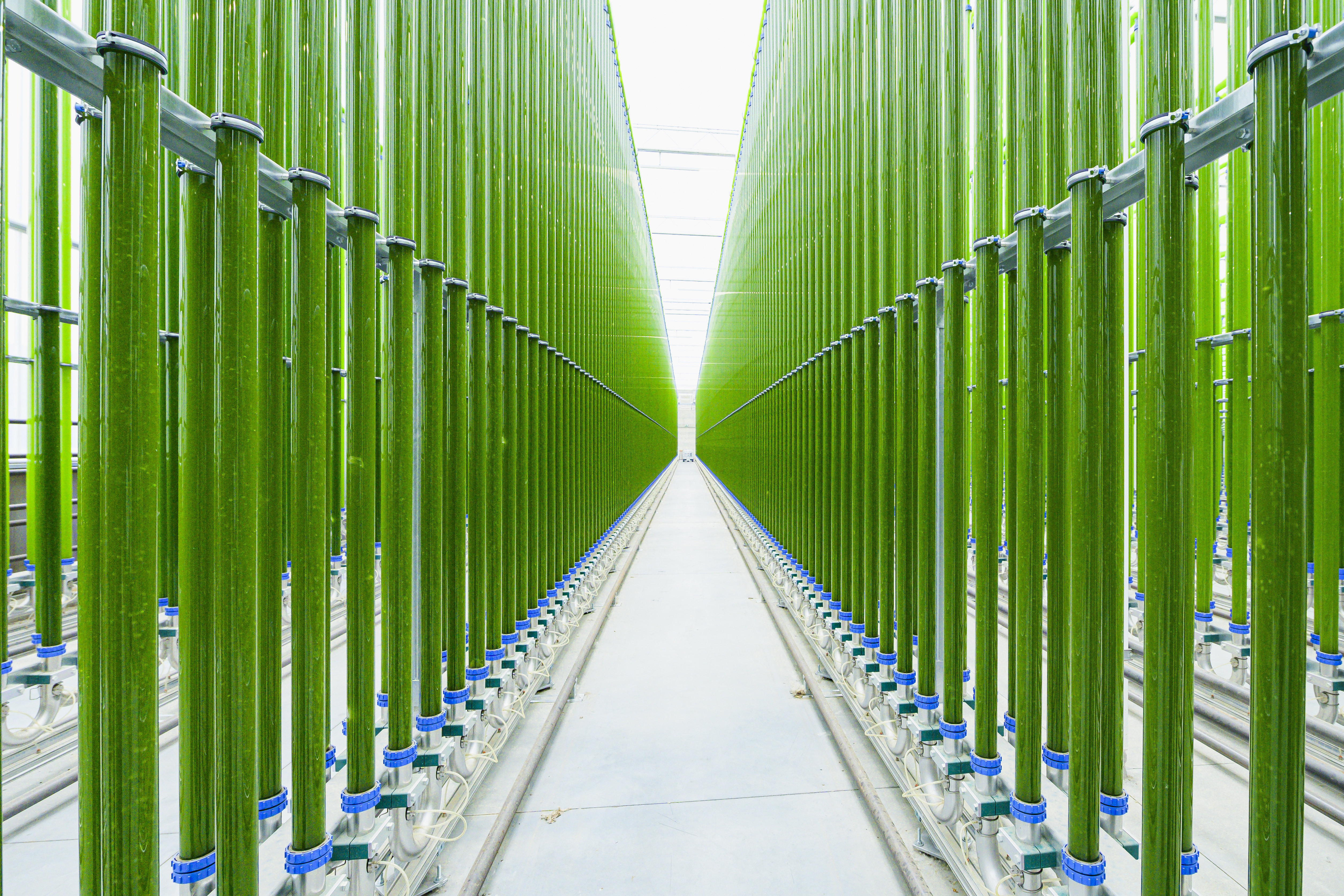
Production hall of the ecoduna company. Photo: © Jeff Mangione / KURIER / picturedesk.com
With that in mind, Reimann says this: “When the technology is widely available, policymakers should reserve alternative fuels for the airline industry.” On the ground, he says, it’s easier to switch to other technologies like batteries. Austria’s Ministry of Sustainability and Tourism agrees. “People are still going to want to fly in the future. So it’s very important to provide alternative, climate-friendly fuels,” says Jürgen Schneider, the head of the ministry’s climate department. It is aiming to completely eliminate the use of fossil fuels by the middle of the century.
Jet fuel tax
According to Markus Gansterer of Verkehrsclub Österreich (VCÖ), a mineral oil tax on jet fuel is needed to provide an incentive to develop alternative fuels. International treaties currently prevent jet fuel from being taxed – in contrast to other types of fuel, including the electricity used for trains.
Operators like Austrian Airlines are against the tax, of course, arguing that it would limit European airlines’ ability to compete on the global market, especially in light of the subsidies that airlines in the Emirates receive. But Markus Gansterer doesn’t buy that argument. “Europe is one the world’s most important economic areas. Anyone who wants to be here will be willing to pay the cost.” Especially when the United States, Japan, Brazil, India, Norway and Switzerland already have a tax on jet fuel. It will be more complicated to introduce such a tax in the EU – because different member states have entered into different air traffic agreements with non-member states, for instance – but it will still be possible to tax the majority of flights, says Bill Hemmings of Transport and Environment (T&E), a Brussels-based NGO and the umbrella organisation of the VCÖ. He says the tax can’t be dismissed as environmentalist idealism; it is feasible, and it would bring in several billion euros per year.
The Council of the European Union is discussing the proposal right now. Austria’s finance ministry says it is open to discussing the issue and that it wants to “make the tax system environmentally friendly”, although it also wants to avoid competitive disadvantages for Europe’s aviation industry. The VCÖ, meanwhile, is calling for greater investment in Europe’s rail network. Introducing a tax on jet fuel would make rail travel more competitive with air travel, says the VCÖ.
Austrian Airlines’ Reimann agrees that it makes sense to phase out commuter flights in favour of rail. Doing so would enable airlines to get rid of inefficient routes, he says. Austrian Airlines used to operate very short flights between Linz und Vienna, but since 2014 the Austrian Federal Railways has been taking care of that job. In a few years – he points out his office window to Vienna International Airport’s train station – construction is set to begin on an extension to the line from here to Budapest. The planners are already at work. When that line is finished, a trip to Hungary’s capital city will only take an hour and forty minutes. Then Austrian Airlines will stop flying that route too.
Science fiction in big cities
Aircraft developers have other plans. Companies like Pipistrel are currently designing flying drones to lift mass rapid transit into the air. Austria has its own aviation innovator too, in the town of Ried im Innkreis. Called FACC, the company is developing several types of aviation technology. “Every second an aircraft takes off with our technology on board,” says Andreas Perotti of FACC during a phone call. One example is a surface structure that looks like tiny shark fins through the microscope. It helps improve aerodynamics – reducing energy use.
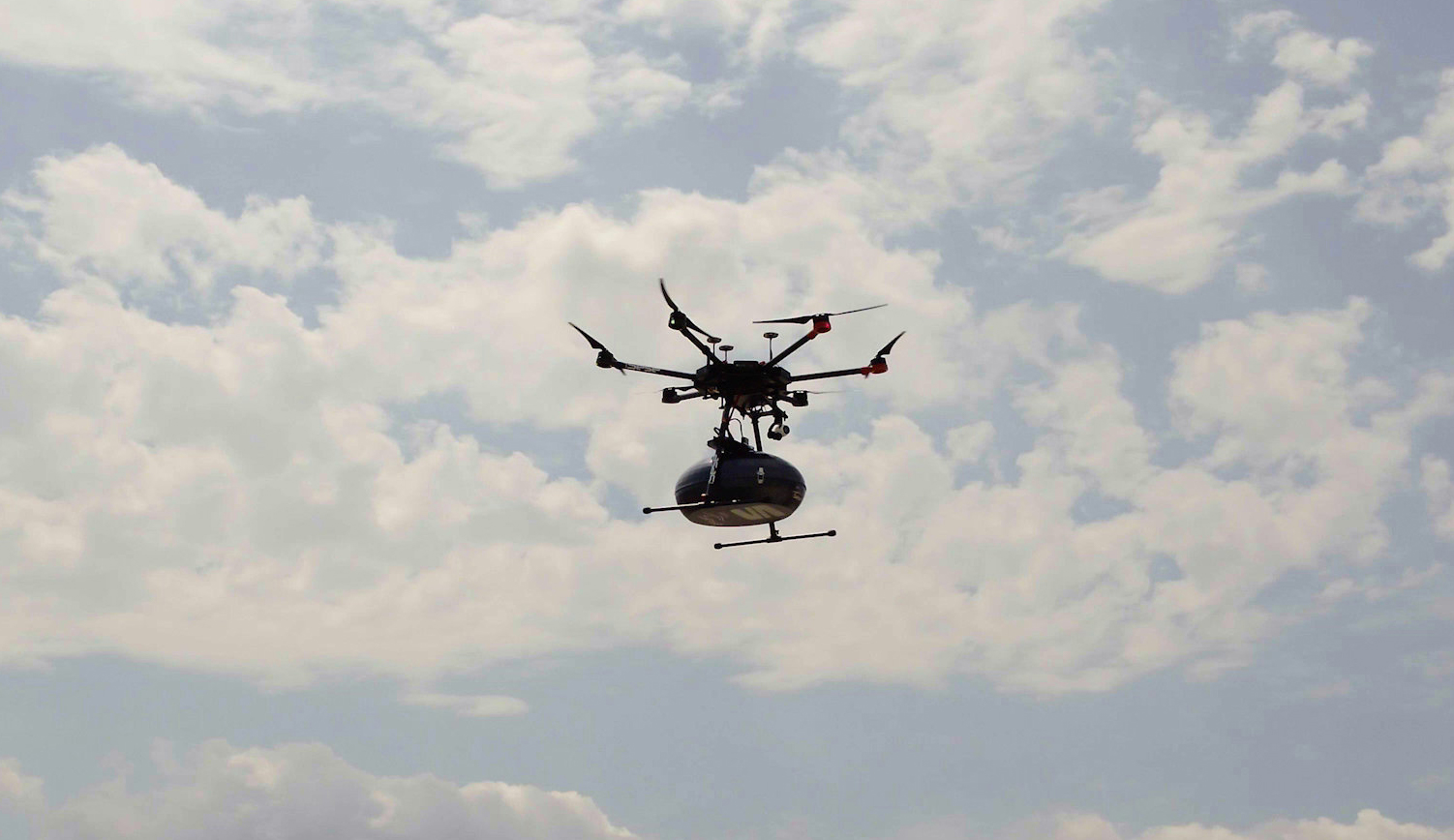
A delivery drone near Martorell, Spain. Photo: © South West News Service Ltd / Action Press / picturedesk.com
FACC is currently focussed primarily on Asia. In concert with Chinese start-up EHang, it is unveiling two-person electric flying taxis – which are self-driving, of course. It’s much easier to do this in the air than on the ground, they say, because the vehicles don’t need to be integrated into an existing traffic system.
The company’s forecasts say that these drones will be widely adopted for commercial use in the Asian market between 2023 and 2025. In megacities, whose streets are often clogged with heavy traffic, the new way to travel and move goods will be by air. “In the future we’ll be in the air. We’re hitting our limits on the ground,” says Perotti. Visitors to the 2020 World’s Fair in Dubai can expect to be flown to the fairgrounds outside the city in a drone without a human pilot. Europe will need a few years longer, but it can still expect to get on board by 2030. At that point around 98,000 passenger drones will be in operation worldwide, simplifying transport in megacities around the globe, FACC’s forecasts say. A flight from New York’s JFK Airport to Manhattan will cost about $50 to $80, says FACC.
“We’re working on planes that take off and land vertically and pick people up where they live.”
Each drone will have a total of 16 propellers on all sides and will be able to reach speeds of up to 160 km/h. The company has stated that it aims to achieve this goal using renewable energy, enabling people to travel with zero emissions.
Sigrid Stagl, Professor of Environmental Economics and Environmental Policy at the Vienna University of Economics and Business, is sceptical of this vision. “Flying vehicles will need more energy than vehicles that travel on the ground,” she says. The amount of renewable energy required by all those flying taxis is not being produced right now. And Markus Gansterer of the VCÖ points out that additional vehicles in the sky will probably not bring any relief on the ground; it will only mean more traffic overall. “When you add another lane on the highway, traffic just increases over the long term,” he argues. Instead of offering new ways to fly, he says it would be better to invest more in the rail system.
New discoveries
A recent study by Roland Berger consultants counted around 140 research and development projects related to electric air traffic. But there are still a few hurdles to overcome. One of them is battery density. Ultralight aircraft like those from Pipistrel can fly with the batteries we have today. But large passenger aircraft need a different calibre of battery to take off. Many scientific institutions are working to develop the necessary technology, but the latest research indicates that the required density is still out of reach. Having said that, the Roland Berger study does predict this area will develop exponentially. “What seemed like science fiction a few years ago is already possible today,” says Nikhil Sachdeva. As an example, he cites a discovery by a team of chemists from the University of Vienna and the Polytechnic University of Turin. They managed to triple the life of lithium ion batteries. This means batteries in electric vehicles can now be used better than people imagined was possible less than two years ago in the summer of 2018.
But do we even need such big aircraft anymore? Shouldn’t airlines be able to cover short distances in small planes? Pipistrel thinks so, but it’s taking things one step further. By doing away with airports. “Airports take up so much space. We’re working on planes that take off and land vertically and pick people up where they live,” says Boscarol.
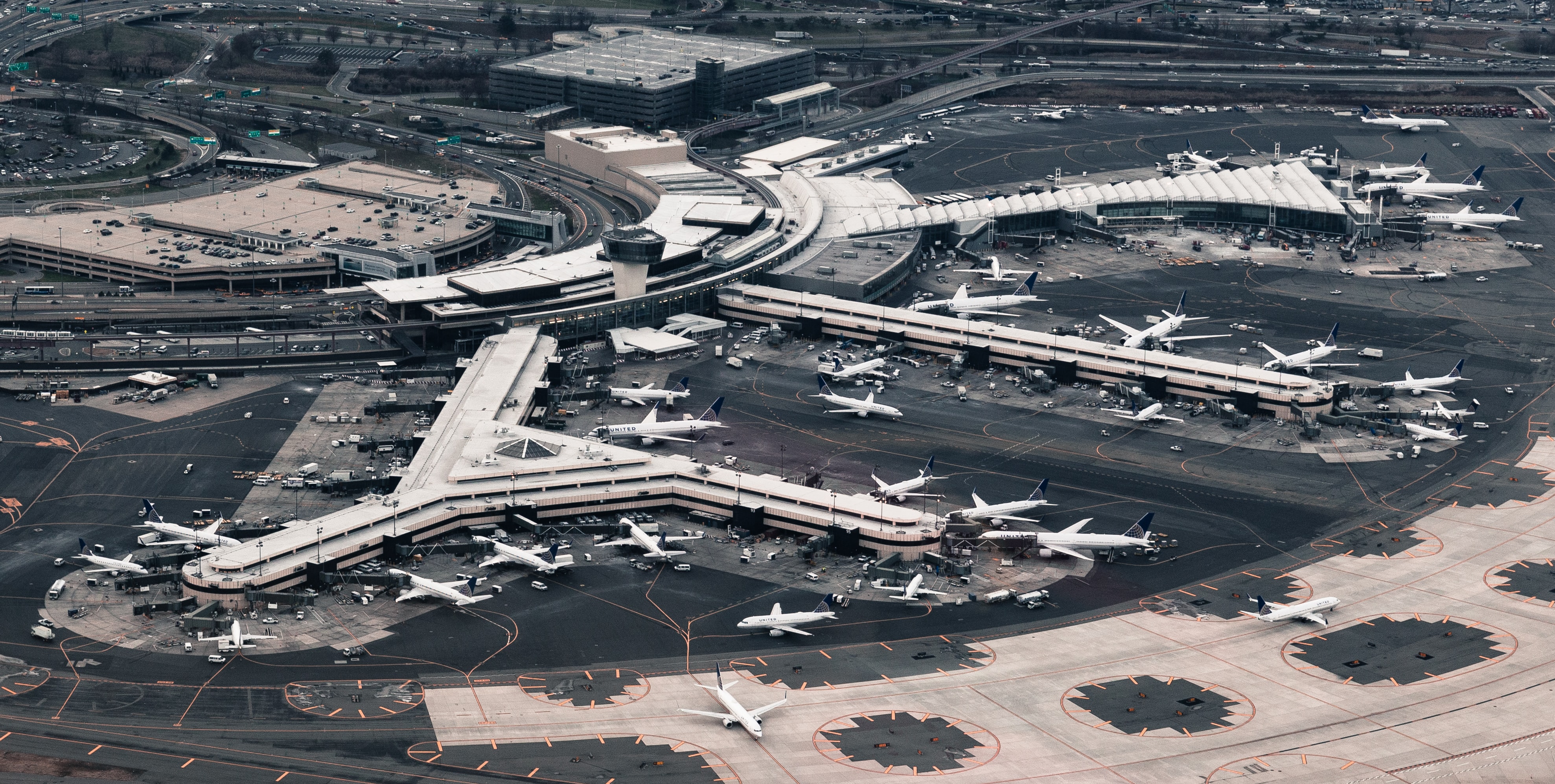
Airport in Newark, USA. Poto: © Nicolas Jehly / unsplash.com
These aircraft will run on renewable energy – but engineers first need to find ways to manufacture a sufficient number of them. In November the European Commission started a debate on how the European economy might be able to decarbonize with a strategic statement called “A Clean Planet For All”. The Commission statement said that the aviation industry will have to be part of this change, “especially in light of rising emissions”. Ground-breaking technologies like electrification and e-fuels are expected to help achieve that goal, as will lifestyle changes.
One other factor besides battery density and other technological challenges will play an important role along the way, and it doesn’t have much to do with ingenuity. It’s the weather. The weather doesn’t always play along, including on the day when Pipistrel wants to unveil its aircraft in January 2019. They have to cancel the demo flight they have planned for their futuristic new electric plane – because burja, the wind that blows into the Vipava Valley where Ajdovščina is located, is too strong. It’s unthinkable to fly in a lightweight aircraft when the wind speed is more than 100 km/h. Would-be onlookers can only sit in the cockpit.
There is a solution for every one of these challenges, they say at Pipistrel. “When you fly high, you see a long way,” says Boscarol, quoting his favourite saying. Experts like Stagl, on the other hand, say that the transition to climate-friendly transport must involve investing as much as possible in rail systems. Wherever rail transport is not an option – like in megacities – small electric planes could move passengers from point A to point B. Hybrid aircraft that use a combination of alternative fuels and electricity could handle the long-distance flights. Because travel will continue to be a big part of life for people in the future – as long as it doesn’t destroy our planet.
Original in German. Published in April 2018 in DATUM.
Translation into English by Douglas Fox.
This text is protected by copyright: © DATUM / Alicia Prager. If you are interested in republication, please contact the editorial team.
Copyright information on pictures are noted directly at the illustrations.
Cover picture: An airplane from below. Photo: © Steve Halama / unsplash.com